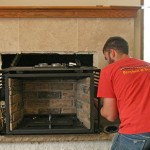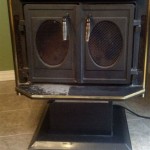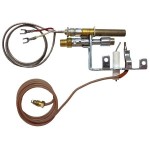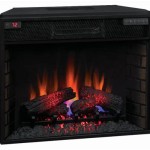The Cost of Converting a Gas Fireplace to a Wood-Burning Stove
Converting a gas fireplace to a wood-burning stove is a project that can save you money on heating costs in the long run, especially if you have access to free or inexpensive firewood. However, it's important to carefully consider the costs involved before making the switch. This article will break down the key factors that influence the cost of such a conversion, helping you make an informed decision about whether this project is right for you.
Initial Costs
The initial cost of converting your gas fireplace to a wood-burning stove will vary depending on several factors, including the type of stove you choose, the complexity of the installation, and your location. Here's a breakdown of the major expenses:
- Wood-burning stove: This is the biggest single expense. Stove prices range widely, from a few hundred dollars for basic models to several thousand dollars for sophisticated units. Factors influencing price include size, efficiency, features, and brand. You can also find used stoves for a lower cost.
- Installation: Installing a wood-burning stove is a relatively complex process that often requires professional help. The cost will vary based on the professional's experience, the complexity of the installation, and the amount of work involved. Some factors that can increase the cost of installation include the need for new chimney components, new venting, or extensive modifications to the existing fireplace structure.
- Permits and inspections: Most locations require a permit and inspection for the installation of a wood-burning stove. These costs will vary based on your local regulations. It is important to research local regulations specific to your area to ensure proper permits are obtained and the installation meets code.
- Additional materials: Depending on the specific requirements of your installation, you may need to purchase additional materials such as firebricks, hearth pads, chimney pipe, or smoke detectors. These costs can vary based on the specific materials needed.
Ongoing Costs
While a wood-burning stove can offer significant savings on heating costs, ongoing expenses are important to consider:
- Firewood: The primary ongoing cost of a wood-burning stove is the cost of firewood. The price of firewood can fluctuate based on location, availability, and the type of wood. If you have access to free or low-cost firewood, this expense can be minimized.
- Maintenance: Wood-burning stoves require regular maintenance to ensure safe and efficient operation. This includes cleaning the stove and chimney regularly, inspecting for wear and tear, and replacing parts as necessary. Regular maintenance helps extend the life of your stove and prevent costly repairs down the line.
- Chimney sweeping: Chimney sweeping should be performed annually by a qualified professional to remove creosote buildup, which can be a fire hazard. This is a recurring expense, but it is essential for safety.
Factors to Consider Before Converting
Before deciding to convert your gas fireplace to a wood-burning stove, carefully consider these factors:
- Space requirements: Wood-burning stoves require adequate space for loading firewood and for heat to circulate. Ensure you have sufficient space around the stove for safe operation.
- Chimney suitability: To ensure proper venting and safety, it's important to determine if your existing chimney is compatible with a wood-burning stove. A qualified professional can inspect your chimney and make recommendations for any necessary modifications.
- Regional regulations: Some areas have specific regulations regarding wood-burning stoves, including emissions standards, burn bans, and permit requirements. Verify local regulations to ensure your installation complies with all requirements.
- Personal preference: Wood-burning stoves offer a unique ambiance and can be a source of enjoyment for many. However, they also require more effort and maintenance compared to gas fireplaces. Consider your personal preferences and lifestyle to determine if a wood-burning stove is right for you.
Converting a gas fireplace to a wood-burning stove can be a rewarding project that can potentially save you money on heating costs. However, careful consideration of the initial and ongoing costs, as well as the factors discussed above, is crucial to ensure a successful and cost-effective conversion. By thoroughly researching and planning, you can make an informed decision that best suits your needs and budget.

Can You Convert A Gas Fireplace To Wood Burning Stove Direct Stoves Resources

Want To Convert Gas Wood Fireplace Full Service Chimney

Converting A Fireplace To Wood Burning Stove Chesneys

Want To Convert Gas Wood Fireplace Full Service Chimney

Converting A Fireplace To Wood Burning Stove Chesneys

Wood Burner Conversion New Jersey Fireplaces Kjb

What S The Cost To Convert A Wood Fireplace Gas Orange County Register

Wood To Gas Fireplace Conversion In Wisconsin Free Quote Badgerland Waesha
Can I Convert My Wood Burning Fireplace To Gas Woodlanddirect Com

What Does It Cost To Install A Fireplace Vs Wood Stove Stamford Fireplaces
Related Posts








